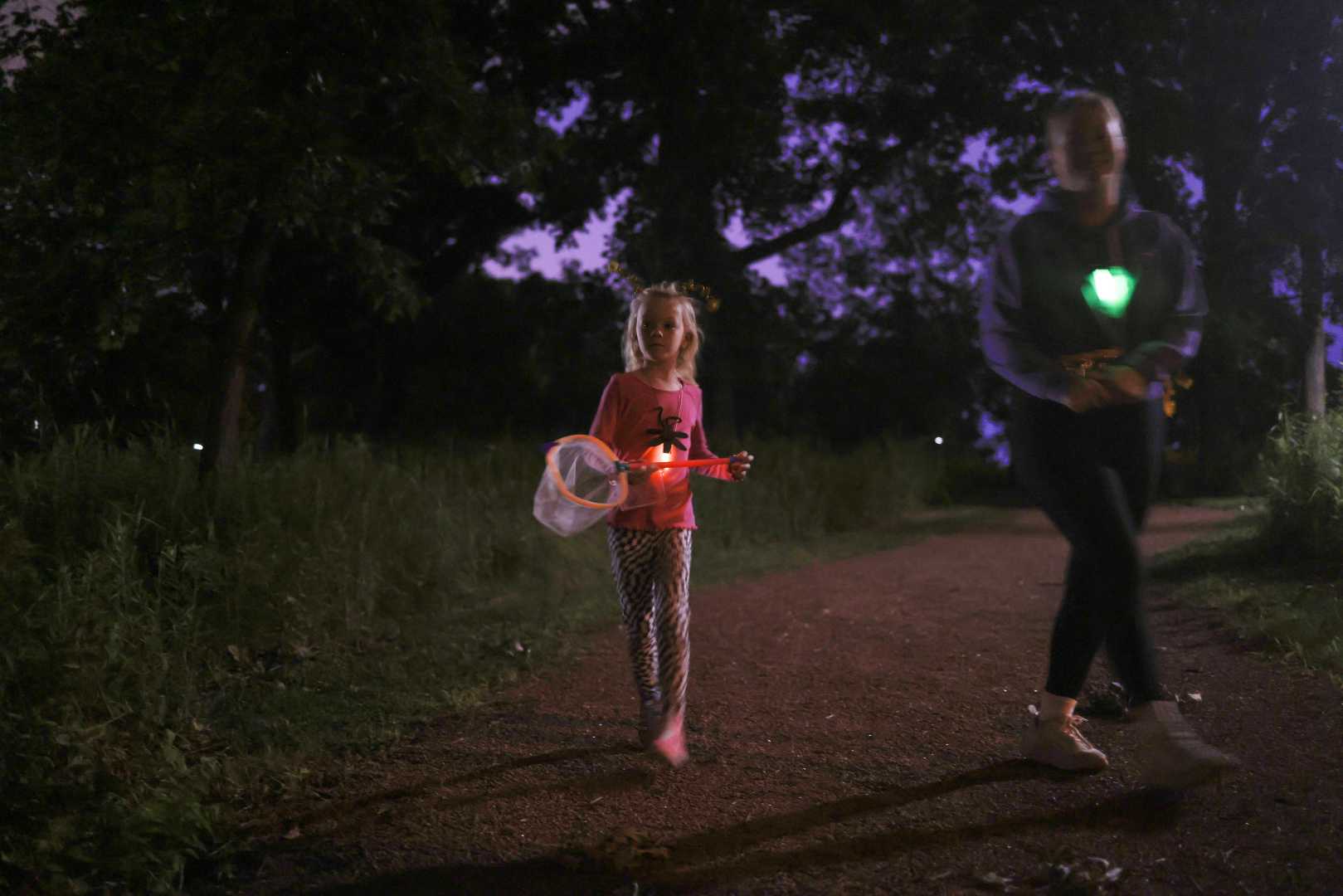News
Firefly Enthusiasts Celebrate Insect’s Glow Amid Population Concerns

Bolingbrook, Illinois – Families and firefly enthusiasts gathered on July 11, 2025, at Hidden Oaks Nature Center to explore the enchanting world of fireflies during an educational program. Among them was Beatriz Swanson, 51, who fondly recalls her first encounter with the insects at age 10 in Mexico. Swanson, now a Plainfield resident, has had a lifelong appreciation for fireflies.
“I couldn’t believe how many we saw,” Swanson said, reflecting on a car ride in upstate New York where she first saw a cloud of fireflies after years. “I was in such awe seeing such beauty. So since then, I’ve loved them.” On the recent hike, she caught two fireflies in a jar, delighted as they blinked before she released them back into the night.
Fireflies, which are classified as beetles, have faced population concerns in recent years, with many reporting declines. However, sightings have increased this summer, bringing hope for the future of these charming insects. Despite the excitement, researchers note serious threats such as habitat loss, light pollution, and pesticides.
“Many species of fireflies have declined in the past few decades, primarily due to habitat loss,” said Richard Joyce, an endangered species conservation biologist involved with a firefly tracking project. With an estimated 179 species of fireflies in the U.S., different species require varied habitats, which greatly influences their survival.
Six species in Illinois, including the vulnerable cypress firefly, are under observation due to limited data on their populations. Joyce remarked, “We just have so little data, and that’s a common issue for insects.” Weather conditions significantly affect firefly growth and reproduction, making climate change a critical factor in their life cycle, according to Darin J. McNeil, a wildlife ecologist.
“Firefly larvae depend on moisture in the soil. Too wet or too dry conditions negatively impact their survival,” McNeil said. He highlighted the importance of maintaining natural environments that support firefly habitats.
In addition to habitat preservation, reducing light pollution and limiting pesticide use can positively impact firefly populations. McNeil suggested turning off outdoor lights at night and allowing fallen leaves to remain in yards can create ideal conditions for fireflies. “That gives the firefly larvae and the eggs somewhere over winter,” he explained.
Local conservation events, such as the firefly hikes scheduled throughout multiple counties, aim to educate children and adults about the importance of fireflies in nature. These events allow participants to collect data on firefly populations, contributing to ongoing research.
Swanson believes that preserving fireflies is essential for future generations. “I’m just laughing and laughing like a child… you cannot let go of that spirit of being a child inside,” she said.












